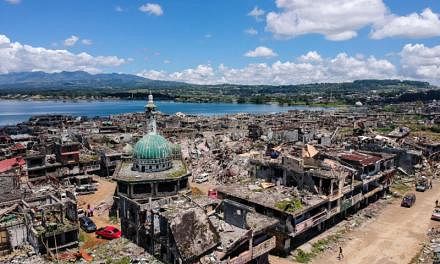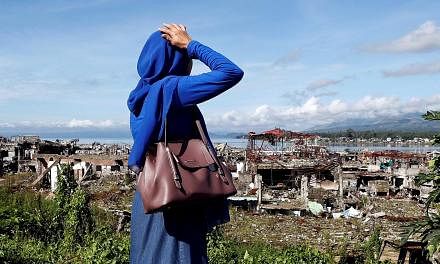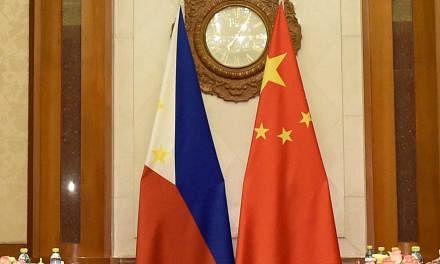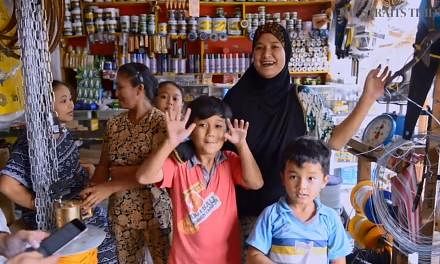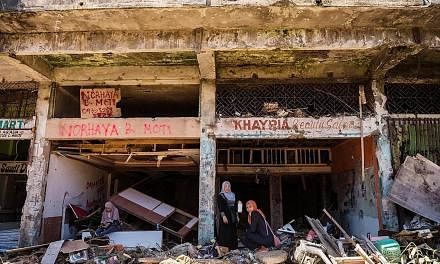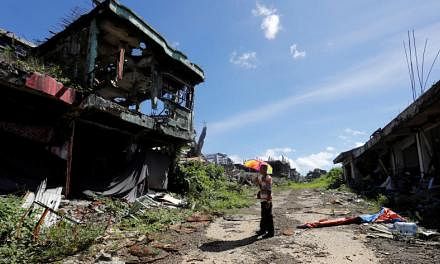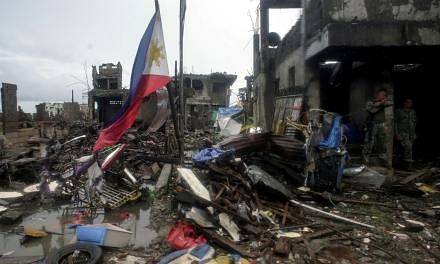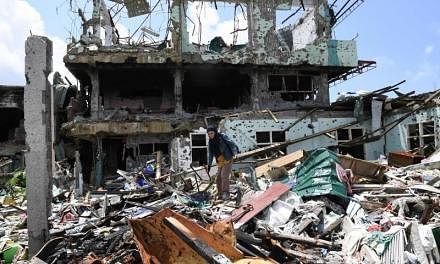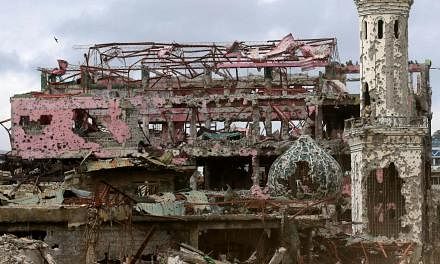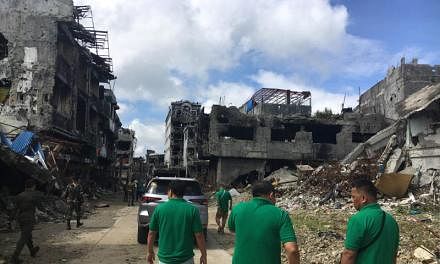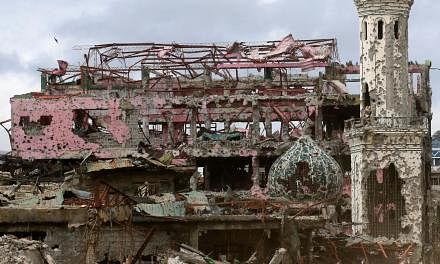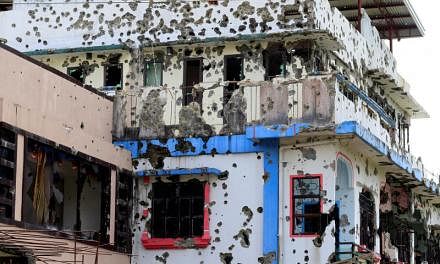MANILA - President Rodrigo Duterte on Tuesday (Oct 17) declared the liberation of Marawi city, a day after security forces killed the two remaining leaders of Muslim militants that overran the southern Philippine city nearly five months ago.
"Ladies and gentlemen, I hereby declare Marawi city liberated from the terrorist influence. That marks the beginning of rehabilitation," Mr Duterte said during his seventh visit to the city since fighting erupted on May 23.
On Monday, security forces killed top terrorists Isnilon Hapilon and Omarkhayam Maute, who led the attack on Marawi.
Security forces have been battling hundreds of militants in Marawi, after a botched raid on May 23 to capture Hapilon, designated by the Islamic State in Iraq and Syria (ISIS) as its top man in South-east Asia.
More than 1,000 militants, government troops and civilians have since been killed in the conflict.
Half of Marawi has been levelled by air raids, artillery barrages and fierce urban fighting, and about 400,000 people have been displaced.
Colonel Romeo Brawner, head of Task Force Ranao, said Marawi residents would have to wait some more before they could return to their city.
"My message to Maranaos is please be patient. We will have to clear the area before you are allowed to return. We will make sure there are no remaining Mautes, rescue remaining hostages, make sure there are no stragglers or unexploded ordnance left behind," he said.
Security officials said the hunt for top terrorists behind the months-long siege of Marawi has shifted to Mahmud Ahmad, a former university lecturer from Malaysia who is believed to have taken the helm of the ISIS' South-east Asia wing following Hapilon's death.
"Mahmud remains... one of our high-value targets in the operations being conducted," Major-General Restituto Padilla, the military spokesman, said on Tuesday (Oct 17).
But he dismissed Mahmud as a threat as great as Hapilon.
"He is an academic. He is not a fighter. His experience in fighting is not as expansive as Hapilon or Omar. His ability to lead the fight is not there," he said.
Defence Secretary Delfin Lorenzana said Mahmud, 39, was likely hiding with "stragglers", including eight fighters from Malaysia and Indonesia, inside a city block that security forces had yet to clear.
Mahmud and Bahrumsyah, head of Katibah Nusantra, an ISIS combat unit in Syria consisting mostly of fighters from South-east Asia, funded the Marawi attack, according to the Jakarta-based Institute for Policy Analysis of Conflict (IPAC).
The two also recruited fighters for the audacious bid to seize Marawi and claim it as an ISIS "province".
The Marawi operations received direct funding from ISIS central and reveal a chain of command that runs from Syria through the Philippines to Indonesia and beyond, according to IPAC.
Bahrumsyah organised the first pro-ISIS rally in Indonesia in March 2014, and left for Syria two months later. He became head of Katibah Nusantra that same year.
Mahmud, also known as Abu Handzalah, underwent training at an Al-Qaeda camp in the late 1990s. He fled to Mindanao in 2015, after he was exposed to have recruited Malaysians to fight with ISIS in the Middle East and pushed to unite terror cells in Malaysia, Indonesia and the Philippines.


